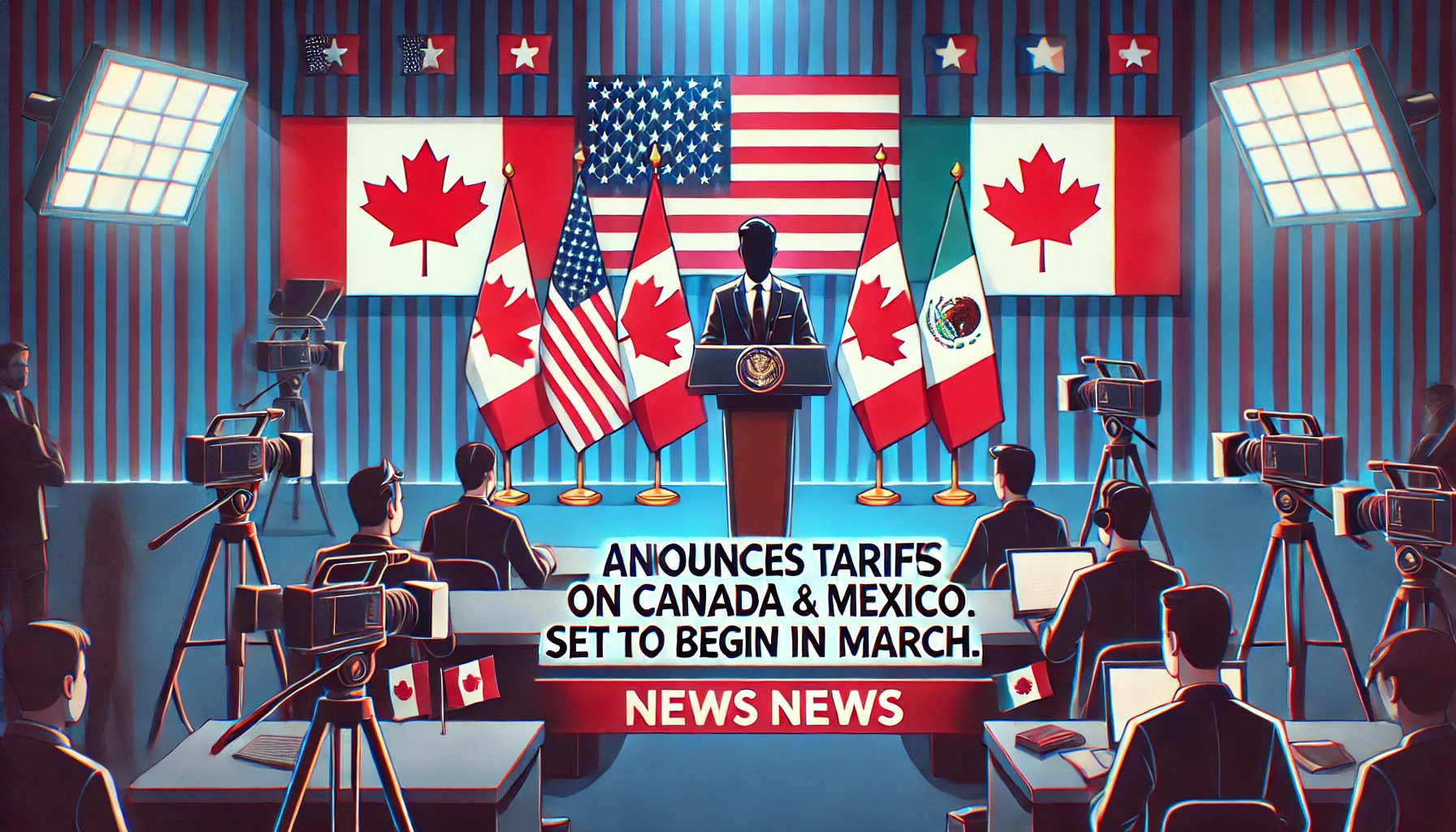U.S. President Donald Trump confirmed Monday that his administration will move forward with tariffs on Canadian and Mexican imports starting next month, officially ending a temporary suspension that had been in place. The decision has raised concerns about potential economic repercussions, including slower growth and rising inflation.
“We’re on time with the tariffs, and it seems like that’s moving along very rapidly,” Trump stated at a White House press conference alongside French President Emmanuel Macron.
While addressing questions specifically about trade measures targeting America’s two largest trading partners, Trump also reaffirmed his broader commitment to what he calls “reciprocal” tariffs. He emphasized that these measures, which he claims are designed to counter unfair foreign trade policies, will proceed as planned in April.
“The tariffs are going forward on time, on schedule,” he reiterated.
Economic Concerns and Justifications
Trump has consistently argued that other countries impose unfair import taxes, disadvantaging U.S. manufacturers and workers. His administration has positioned tariffs as a way to bring back domestic jobs and generate revenue to help reduce the federal budget deficit.
“Our country will be extremely liquid and rich again,” he declared.
However, most economists predict that the financial burden of these tariffs will ultimately fall on American consumers, retailers, and manufacturers. Industries that depend on globally sourced materials—such as automotive production—are expected to face higher costs. This is particularly concerning given that Trump has already imposed separate 25% tariffs on steel and aluminum imports.
Retail giants like Walmart have warned about economic uncertainty, and the University of Michigan’s consumer sentiment index has dropped by nearly 10% in the past month, partly due to concerns about inflation and trade disruptions. Despite his campaign promises to curb inflation, Trump’s aggressive tariff strategy has raised questions about its long-term impact on prices.
International Reactions and Diplomatic Tensions
While Trump stood firm on his stance, Macron, speaking at the press conference, took a more measured approach.
“We want to make a sincere commitment towards fair competition where we have smooth trade and more investments,” Macron stated, according to a translation of his remarks in French.
He acknowledged that discussions between the U.S. and European leaders had found some common ground, though further negotiations would be necessary.
Tariff Details and Policy Shifts
Trump’s administration plans to lift exemptions from the 2018 steel and aluminum tariffs, enforcing a 25% tax on imports of both metals. More broadly, tariffs on Mexican imports will also be set at 25%, while Canadian goods—particularly energy products like oil and electricity—will face a lower 10% tariff.
Despite ongoing negotiations with officials from Canada and Mexico, Trump signaled that he would not extend the 30-day suspension of these tariffs, initially scheduled to take effect in February.
His administration has linked the tariffs to broader geopolitical concerns, including illegal immigration and the smuggling of illicit drugs such as fentanyl. While Canada has relatively little connection to fentanyl trafficking, it has appointed a drug czar to address the issue in an effort to ease tensions with Washington. Mexico, meanwhile, has increased its National Guard presence at the U.S. border as part of an effort to curb illegal crossings.
Trump has also proposed additional tariffs to match those imposed by other countries. These could be even higher than current foreign tax rates, as his administration plans to account for subsidies, regulatory barriers, and value-added taxes (VAT) in the calculations.
Potential Trade War and Economic Fallout
The move has sparked fears of retaliatory tariffs from Canada, Mexico, and Europe, potentially triggering a broader trade conflict. Analysts warn that such escalations could further disrupt global supply chains and hinder economic growth.
A recent analysis by Yale University’s Budget Lab projected that the tariffs could reduce the average annual income of U.S. households by approximately $1,170 to $1,245.
As businesses and policymakers brace for the impact, the uncertainty surrounding Trump’s tariff policies continues to ripple through financial markets, trade negotiations, and the broader economy.



